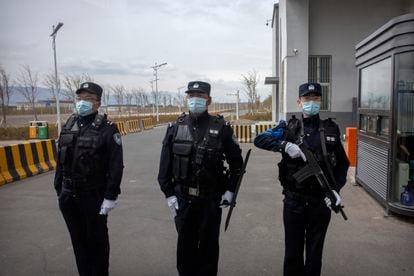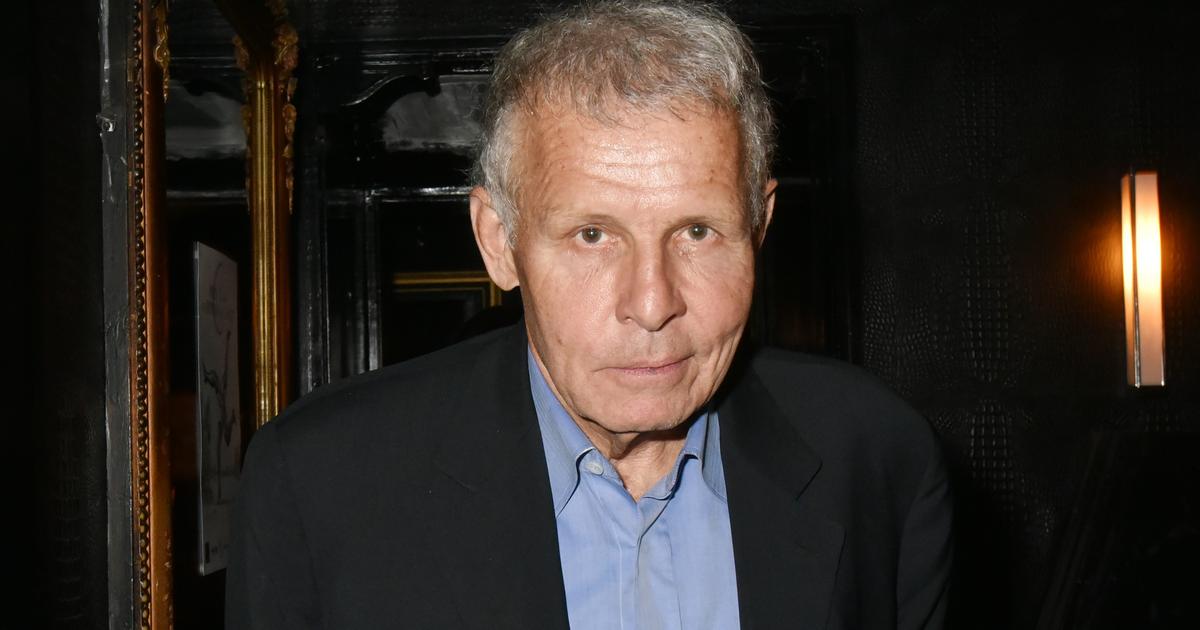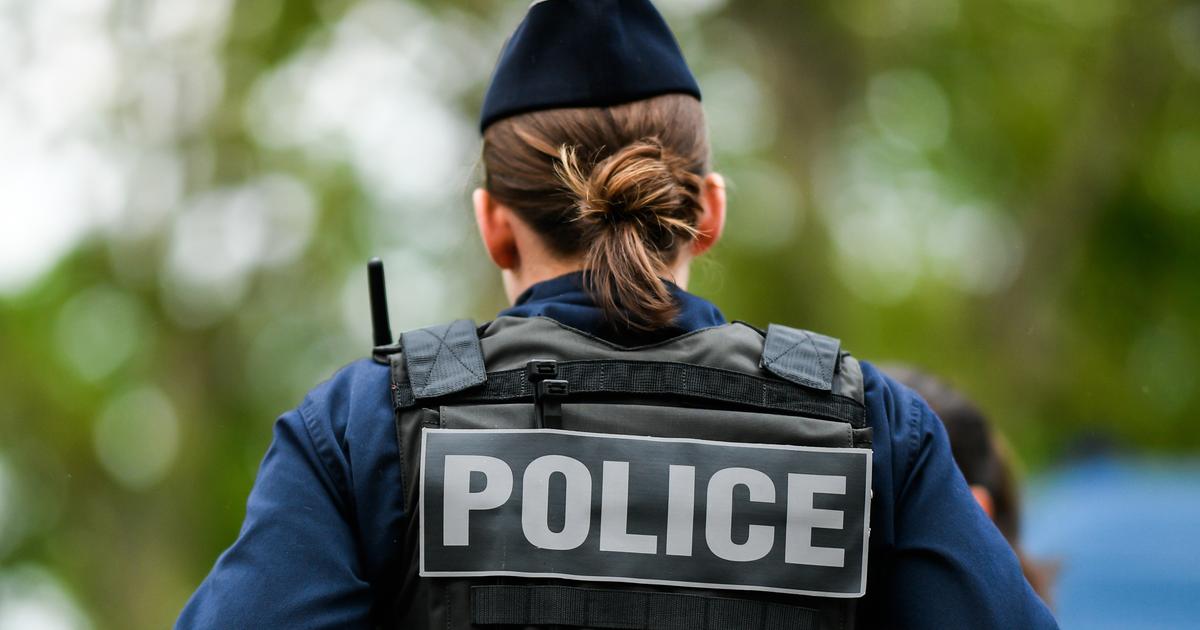Tens of thousands of police records, photographs of the interior of confinement centers and official documents of the Chinese regime, to which EL PAÍS has had access, put a face to the repression that China exercises against the Uyghur population of Xinjiang for the first time and offer a a new example of the magnitude of the prison system established in this region and the paranoia that guides Beijing's policies against ethnic minorities.
These are the keys to
The Xinjiang Police Files
, a journalistic investigation published this Tuesday simultaneously in 11 countries:
1. What is 'Xinjiang Police Files'?
There are tens of thousands of police files, photographs, official documents and transcripts of speeches by senior officials of the Communist Party of China (CCP) to which this newspaper has had access.
The leak is of special relevance because the documents cover all administrative levels, from the orders of party secretaries to the protocols of local police, with detailed instructions on how to operate in the re-education camps.
The photographic archive also provides unpublished information, since it is the first time that the names of people interned, both in the so-called re-education centers and in prisons or detention centers (for those arrested awaiting sentence), are accompanied by portraits taken by the Chinese authorities.
More information
Thousands of secret documents put a face to the Chinese repression in Xinjiang: prison regime, child prisoners and “shoot to kill”
The files also contain images from inside the prisons and re-education camps.
Finally, the
Xinjiang Police Archives
investigation has analyzed official documents based on the transcript of speeches by senior officials such as Chen Quanguo, secretary of the CCP in Xinjiang between 2016 and 2021, or the Minister of Public Security, Zhao Kezhi.
These pronouncements maintain an unusual naturalness in relation to official documents of the regime, probably because they are transcripts of oral appearances.
The words of the communist leaders reflect the consideration that Beijing has for the Uyghurs, dangerous criminals who can be shot to death if they attack confinement centers or flee.
[See in full at this link the records of the inmates along with the rest of the leaked documents]
2. Who are the Uyghurs and why is there a crackdown on them?
The Uyghurs are part of an ethnic group with Turkic roots, located mainly in the western fringe of China and Central Asia.
Some 11.6 million Uyghurs are estimated to live in the autonomous region of Xinjiang, a vital area on Beijing's planned new Silk Road, along with 10.9 million Han and other ethnic minorities.
In the rest of the country, the vast majority of citizens are of the Han ethnic group.
But Uyghur and Han cities are not only separated by geography, but also by culture, customs, facial features, and especially religion, since the majority of Uyghurs profess Islam.
Since 2017, China has embarked on a campaign of mass incarceration of Uyghurs that experts refer to as "the most intense campaign of social and coercive reengineering since the Cultural Revolution."
With it, Beijing has culminated the active policy of ideological assimilation and marginalization of this ethnic minority that it has been practicing for years.
As a result of this historical discrimination, some groups of Uyghurs have maintained a separatist discourse —they refer to Xinjiang as East Turkestan—, which has sometimes led to violent movements and attacks.
In 2009, serious altercations between Uyghurs and Han led to the death of some 200 people.
Since the 9/11 attacks in the United States, China has used the discourse of the war on terror to link Uyghurs with Islamist extremism.
Uyghurs pray at a mosque in Kasgar, in April 2021. Mark Schiefelbein (AP)
3. Who or what is behind the repression in Xinjiang?
In May 2014, an attack in Urumqi, the regional capital, killed around 50 people.
That same month, the Xi Jinping regime, the highest exponent of power in the country's government and in the CCP, launched the Strong Blow campaign against violent terrorism
in Xinjiang
.
Although it would not be until August 2016 when Chen Quanguo arrived in Xinjiang as the communist general secretary of the region, when the outbreaks of violence subsided.
Analysts point to Chen as the ideologue of the system of repression in Xinjiang through electronic surveillance and indoctrination in detention centers.
Xinjiang police files contain transcripts of two speeches by Chen.
4. What are re-education camps?
Since at least 2017, when China stepped up its campaign of mass arrests against Uyghurs, many Uyghurs have been interned in what Beijing euphemistically calls "centers for ideological education and professional training."
According to the Chinese government, they are residences that the “students”, as it calls the interns, can leave whenever they want.
However, the information contained in
the Xinjiang Police Files
It ratifies that they are internment camps where Beijing culminates the indoctrination and assimilation of the Uyghurs, interned without judicial guarantees and forced to learn and use Mandarin Chinese, renounce what they consider "extremist thought" and submit to the propaganda of the CCP.
Former detainees, today in exile, have denounced the practice of torture, sexual abuse and sterilization of women in these centers.
To date, the number of internal citizens in re-education centers in Xinjiang, agreed by academics and journalists, and defended by the UN, was around one million.
A perhaps very conservative number according to what was expressed in one of the most revealing political speeches included in the leak.
This is the one pronounced by the Minister of Public Security, Zhao Kezhi, during his visit to Urumqi, on June 15, 2018, and classified as a "secret document", where he estimated at two million citizens throughout Xinjiang "influenced" by the independence movement, plus another two million in the south of the region moved by religious extremism.
5. What was known about life in the camps before 'The Xinjiang Police Files'?
This investigation joins another half dozen that since 2019 and thanks to testimonies of escapees, confidential documents and satellite images try to prove the existence of the confinement camps and the magnitude of the communist regime's systematic repression campaign against the minorities of Xinjiang.
The novelty of this leak, in addition to being the one that includes a greater number of documents, is that for the first time it allows to know the face of the detainees, as well as the orders and practices related to repression at all levels of the Chinese Administration.
Police officers outside a detention center in Urumqi, Xinjiang, in April 2021. Mark Schiefelbein (AP)
6. Where do the documents come from?
The Xinjiang police files
have been obtained by an anonymous outside source through sophisticated hacking operations into computer systems operated by the Chinese Police Public Security Bureau (PSB) in Konasheher counties, Kashgar prefecture , and Tekes, in Ili Kazakh prefecture.
The person responsible for this hack, who prefers to remain anonymous for security reasons, has acted on his own initiative, without conditions or mandate from any of the researchers.
7. How have the documents been verified?
The German academic and expert in the analysis of Chinese oppression policies in Xinjiang Adrian Zenz, a member of the Victims of Communism Memorial Foundation, has worked on the verification and investigation of the documents, in collaboration with 14 media outlets. 11 countries.
In addition to EL PAÍS, the
BBC
(United Kingdom),
USA Today
(United States),
Der Spiege
l (Germany),
Politiken
(Denmark),
Le Monde
(France),
Mainichi Shimbun
(Japan), the International Consortium of Investigative Journalists (ICIJ),
Bayerischer Rundfunk
(Germany),
L'Espresso
(Italy),
NHK
(Japan), Finnish Broadcasting Company
YLE
(Finland),
Dagens Nyheter
(Sweden) and
Aftenposten
(Norway).
8. What has been the Chinese government's reaction to this leak?
"Issues related to Xinjiang are, in essence, about fighting violent terrorism, radicalization and separatism, not about human rights or religion," said Liu Pengyu, spokesman for the foreign department of the Chinese Embassy. in the United States, to the questions posed by the group of journalists who have worked on the investigation.
The questionnaire was sent to the Chinese Ministry of Foreign Affairs and the embassies of the participating countries.
According to Liu, “in the face of the serious and complex situation of the fight against terrorism, Xinjiang has taken a series of decisive, solid and effective deradicalization measures” that have led to the region “not seeing any cases of violent terrorism for several years. followed”.
"In recent years,
Follow all the international information on
and
, or in
our weekly newsletter
.
Exclusive content for subscribers
read without limits
subscribe
I'm already a subscriber


/cloudfront-eu-central-1.images.arcpublishing.com/prisa/KLSYQ32RGZFXLNNDYPWLUR2EWE)









/cloudfront-eu-central-1.images.arcpublishing.com/prisa/KMEYMJKESBAZBE4MRBAM4TGHIQ.jpg)


